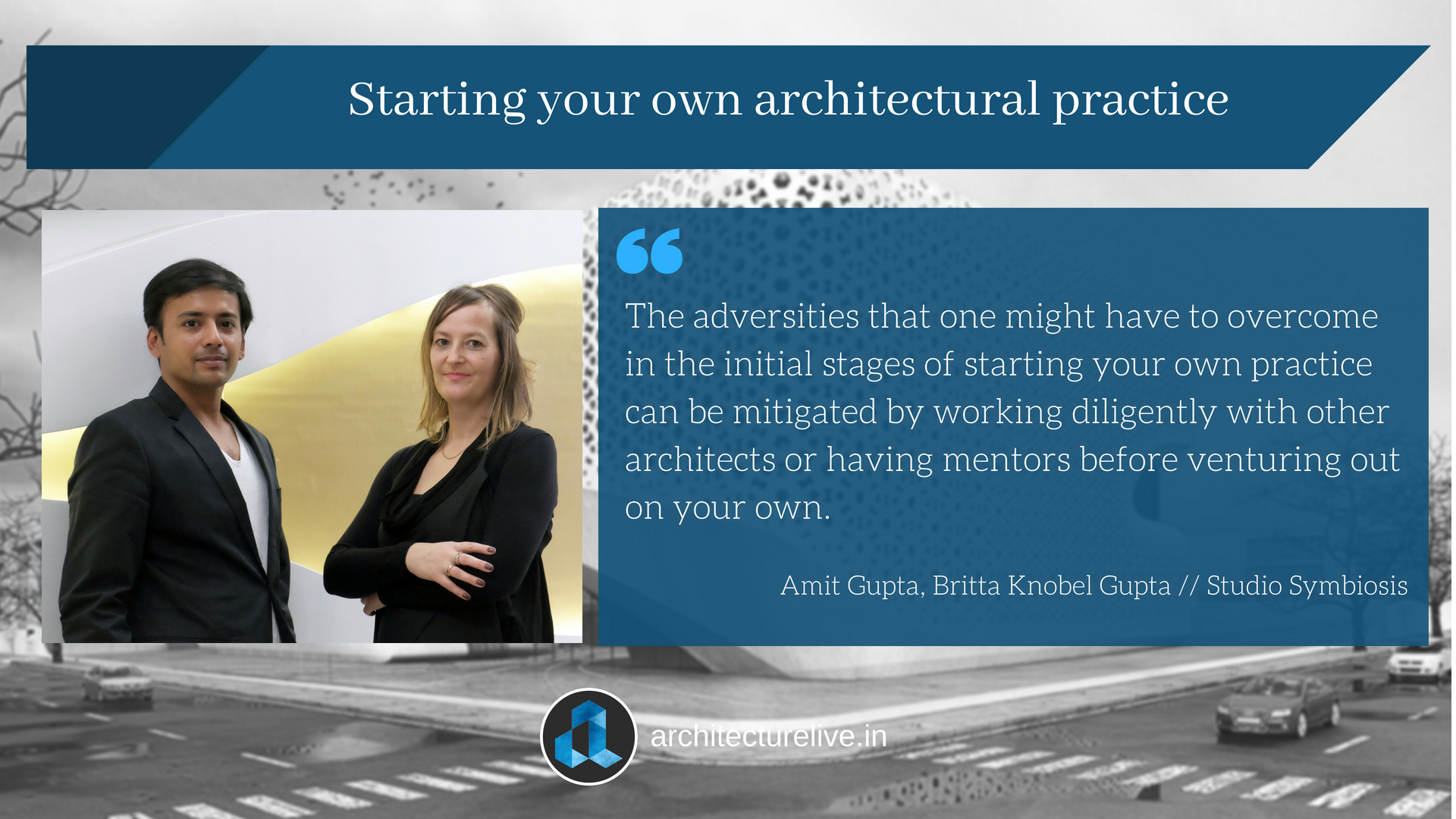“Every challenge can be put forth as an opportunity.”
We carry forward our discussion about the opportunities and obstacles that come forth with starting your own practice. If you are thinking about venturing out on this, you have to make sure you are ready for the trepidations that come along.
Today, we are in conversation with the enigmatic duo – Amit Gupta and Britta Knobel Gupta, co-founder of the Delhi based multi-disciplinary firm Studio Symbiosis.
Established in 2010, the firm has received several awards and accolades since then. The firm has been involved in varied ranges of projects including villas, hotels, sports city, masterplan and other projects of various scales. Their design philosophy is to create integrated design solutions imbibing amalgamated, efficient, robust and sustainable designs leading to performative architecture.
In a short span of time, Studio Symbiosis has managed to create a niche for itself in the industry. When asked about the genesis of the firm and the hurdles and opportunities that came along with it, Amit Gupta tells us, “We don’t believe in the term challenge. The word itself has a negative connotation. For us we see each challenge as put forth here as an opportunity. Architectural constraints are different in different countries and differs from place to place. We believe in adaptability and responsive architecture.”
He concurs that believing in yourself and your own abilities help resolve half the problems. If you show confidence in your work, so will the client. Having said that, he highlights how their experience of working with international architects such as turn of the generation master architect, Zaha Hadid has helped them understand the different criterions and aspects that involve in the business of architecture. “Both myself and Britta have a combined experience of 30 years in the field of Architecture and have worked on complex geometries and have been involved in construction process all over the globe since a very young age.
Having said this, “Collaboration” is a key word for our practice and we do collaborate with specialists, in form of Structure, sustainability, landscape, lighting, and so on and so forth. Our collaboration extends to professionals from the field of bio engineers and robotics to name a few.”
Starting their own practice was initially not a decision that was planned beforehand or was something they were working towards. Their main criterion when they were working with other architects was to learn, not to evolve into a practice but to evolve as better, sensitive architects who are adherent to technology.
She says, “About nearly a decade after graduating, one day speaking in front Sadler wells theatre in London, we both decided that maybe it’s time to start our own firm and it was a very spontaneous decision which lead to the formation of our studio. Although there were adversities initially, but nothing that could confound us. We expanded our firm and took our first architect three months after its inception”
Having said that, Amit Gupta discerns that there is a lot to be tapped onto today. There are several opportunities that can be taken forward. He says,
“There are several exciting projects that are coming up in India and all over the world. It is important that we focus on what we want as architects and what we can evolve as the future of architecture for the betterment of society.”
To this he added,
“The perspective of opportunities depends on the style of architecture that one practices. It should be noted that before starting your own practice, an understanding of what kind of practice you aspire to have is essential. Doing everything at once may not always work to your benefit. Furthermore, the adversities that one might have to overcome in the initial stages of starting your own practice can be mitigated by working diligently with other architects or having mentors before venturing out on your own.”
With this, the dialogue with the Amit Gupta and Britta Knobles Gupta comes to an end, but not before they enlighten young aspirants with their mantra-“ Believe in your self and the possibilities that the best version of yourself can concur.”








One Response
I am 69 years old. I conduct workshops on “Sun responsive architecture” in schools of architecture. I feel that it is the moral duty of every architect to create a peaceful environment. thermally comfortable conditions inside a habitable space ! We are creating only beautiful presentations drawings with the help of a computer and don not bother to check whether they are translated into a reality and that is my experience .
I am the only architect who can calculate sun angles mathematically before one boots his computer for any day from 01st Jan to 31Dec for any place in the world and study its impact on the building envelope.
I would love to conduct a workshop in Delhi on this subject. I have already conducted the same all over India. I can send the details after hearing from you .
With warm regards.
Ar.Mukund